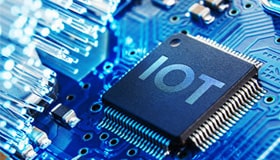How to analyze signal integrity in 5G deployment
Signal Integrity (SI) signifies the signal’s ability to propagate without distortion, SI problems arise from the physical nature of the interconnecting wires. It measures the quality, or distortion of the signal passing through the PCB traces, cables, and connectors in a system.
Connectors and signal integrity plays a significant role in 5G implementation. 5G uses millimeter wavelengths to transmit and receive data compared to centimeter wavelengths in LTE or 4G. Increasing frequencies in board design comes with many undesirable effects on signal integrity which includes increasing noise and the effects of attenuation, maintaining the impedance becomes more complex. 5G need to support for optimized RF, microwave, and millimeter-wave connectors for circuits transmitting higher and higher data transfer rates.
5G wireless communications involves a variety of technologies which includes antennas, PCB materials, connectors & cable assemblies, along with existing network components to deliver high performance, high data transfer speed, increased signal integrity, thermal and enhanced EMI performance. With this increased data transfer rate, connector precision becomes critical. Connectors have to ensure and protect signal integrity and transmission for constant connection. Signal integrity should not be affected by changes in current and voltage conditions.
The components used in the 5G radio need to be qualified for signal integrity, electromagnetic interference and thermal performance. These are the three critical aspects inside the radio. This signal distortion happens due to factors such as impedance mismatch, reflections, ringing, crosstalk, jitter and ground bounce. Signal-integrity problems, including delays, ringing, crosstalk, and EMI, can be identified through careful use of simulation. At higher frequencies, the capacitance and inductance cause the wire to act like a transmission line, and antenna effects can cause crosstalk and electromagnetic interference (EMI). The resistance of the wires causes voltage drops. As a result, the signal amplitude at the receiver is reduced due to the IR drop.
The connections have to handle high-speed, higher-power, more stringent thermal requirements and, at the same time, the connections have to be smaller to limit the overall physical size (in case of active antenna system - AAS). High-frequency signals will increase signal integrity issues. If the signal has a significant component at or near that frequency, that component of the signal will be heavily attenuated due to the energy demands. The signal’s rise time is a critical parameter in SI issues. To attain a desired SI level, one should focus on impedance control, attenuation, ground bounce, propagation delay, crosstalk, switching noise and EMI/EMC.
All 5G components must be considered, specifically for transmission and the choice of antennas for the end-use devices. These will incur challenges for the designers incorporating arrays of high-frequency antennas and their placement into product design, finding the best connector and interconnect approaches for the high-frequency application.
Testing - High-frequency connectors
New high-performance devices, systems, and test & measurement equipment are required to support the ultra-high frequencies and high data rates required by technologies such as mmWave, Massive MIMO, beamforming, and full duplex. During the testing process in order to handle the entire 5G spectrum, it is critical to ensure that the test setup–including the test cable assembly, cable, adapters, and board mounted connectors–do not introduce unnecessary variables. They must invest on millimeter-wave test cables, adapters, and board-level interconnects that can tolerate increased bandwidth without compromising signal integrity.
The 5G necessitates several arrays of broadcast and receive antennas. More antennas are positioned into smaller space to accommodate higher bandwidth requirements. This tends to the usage of high-density interconnections between the antennas and the radios, such as multi-pin connectors and mini-coaxial cable bundles. The use of high-density multi-port connectors also allows testing to take place right next to the DUT, decreasing testing distances and the risk of interference.
Millimeter-wave connectors provide a secure, threaded connection for board-level goods and can function mode-free at 5G frequencies. Push-on connectors such as SMP, SMPM, and SMPS connectors are suitable for high signal density applications.






